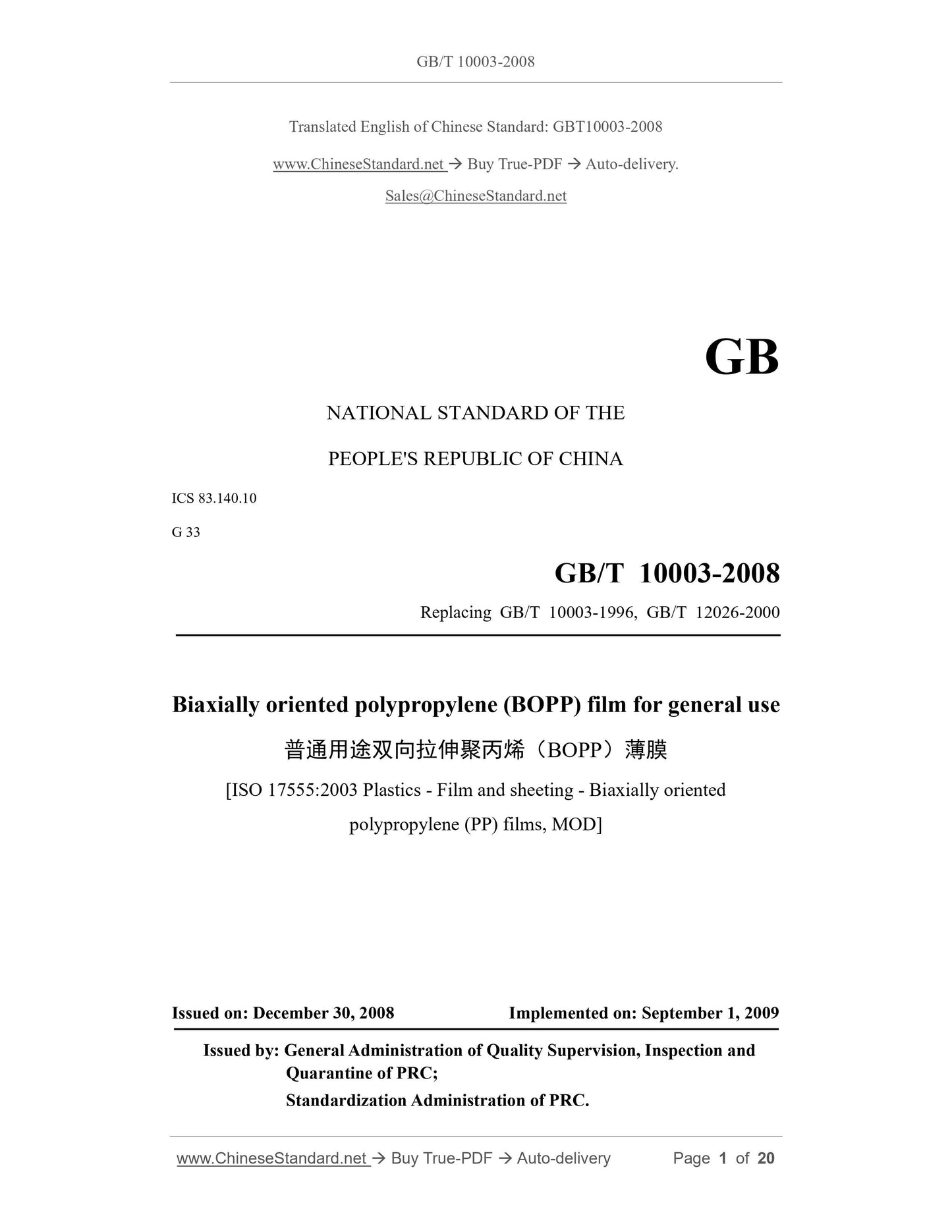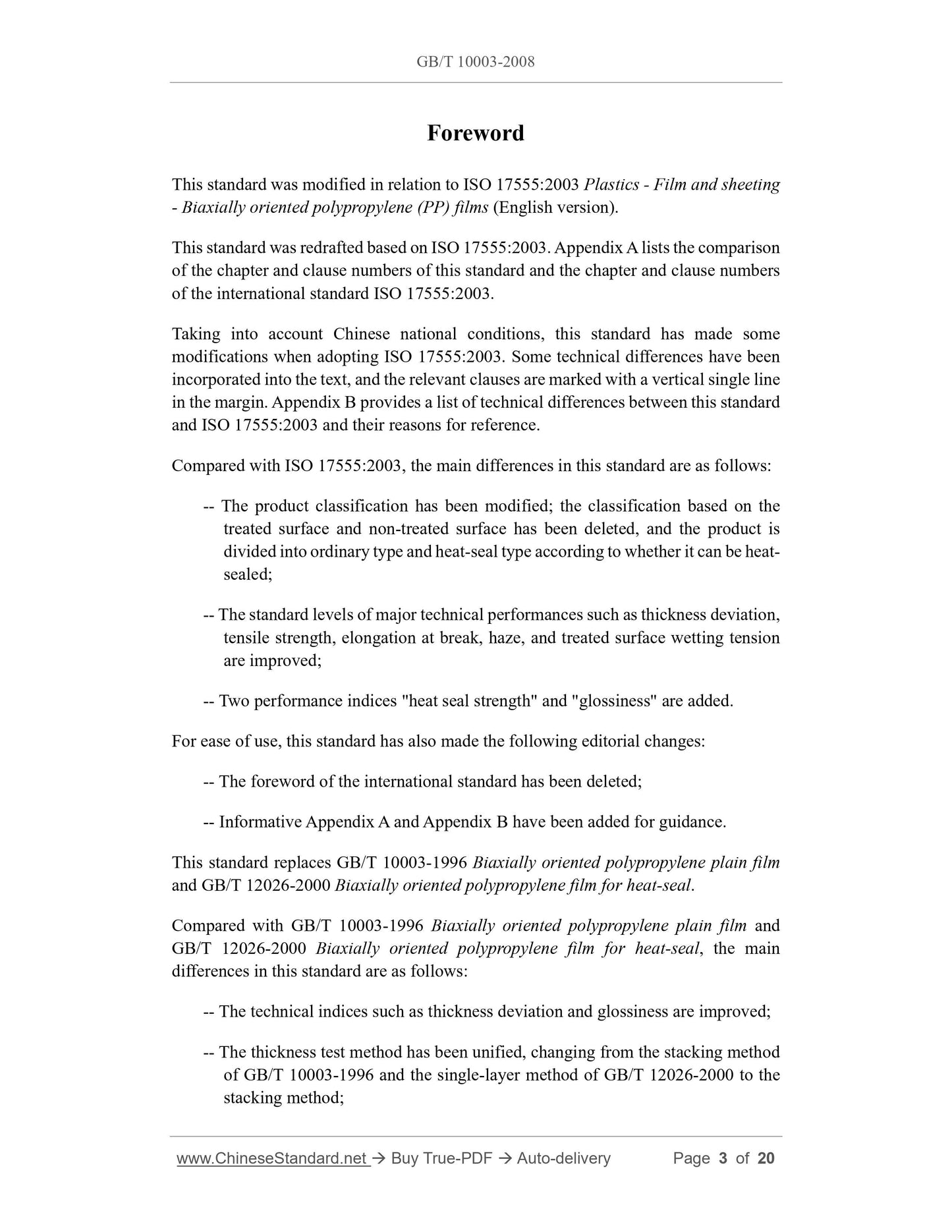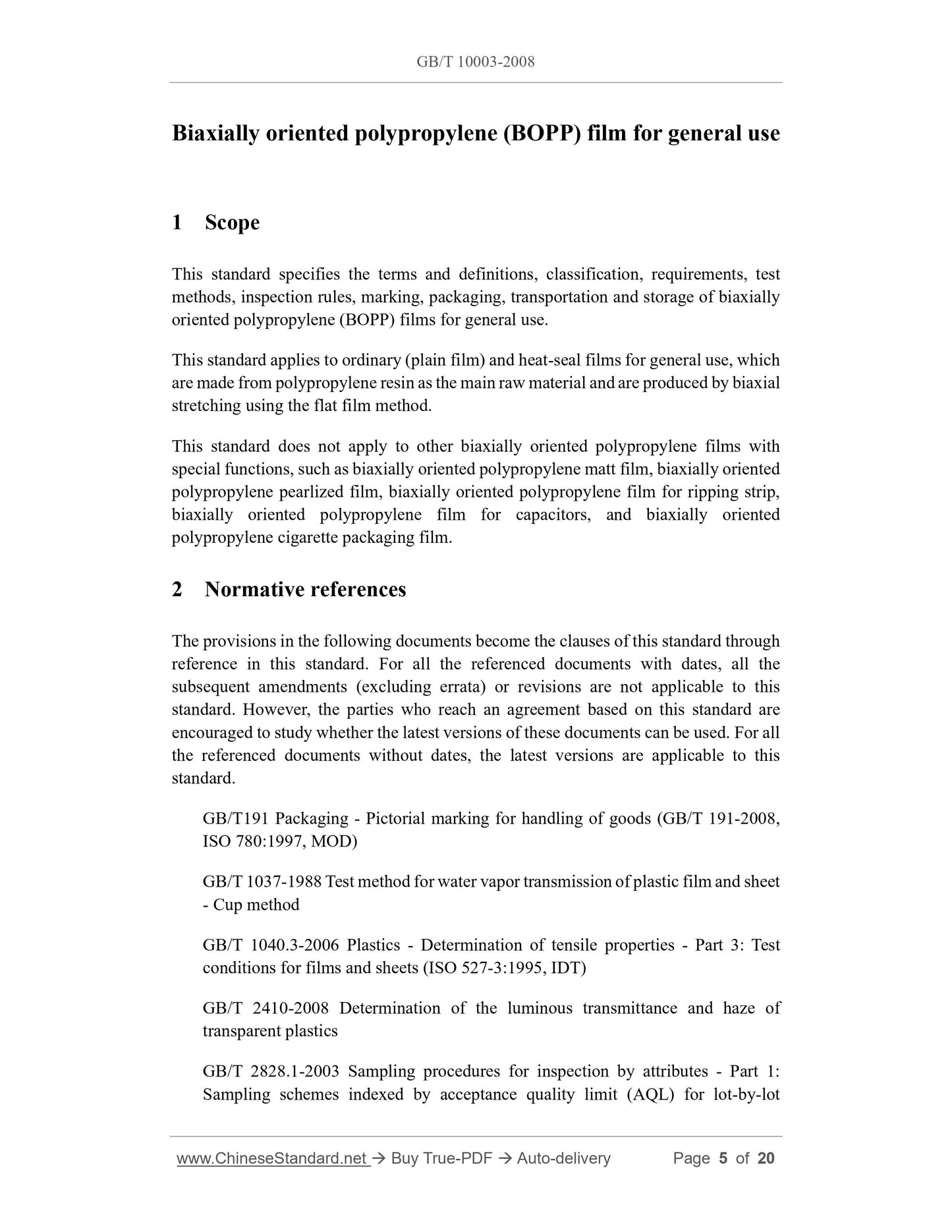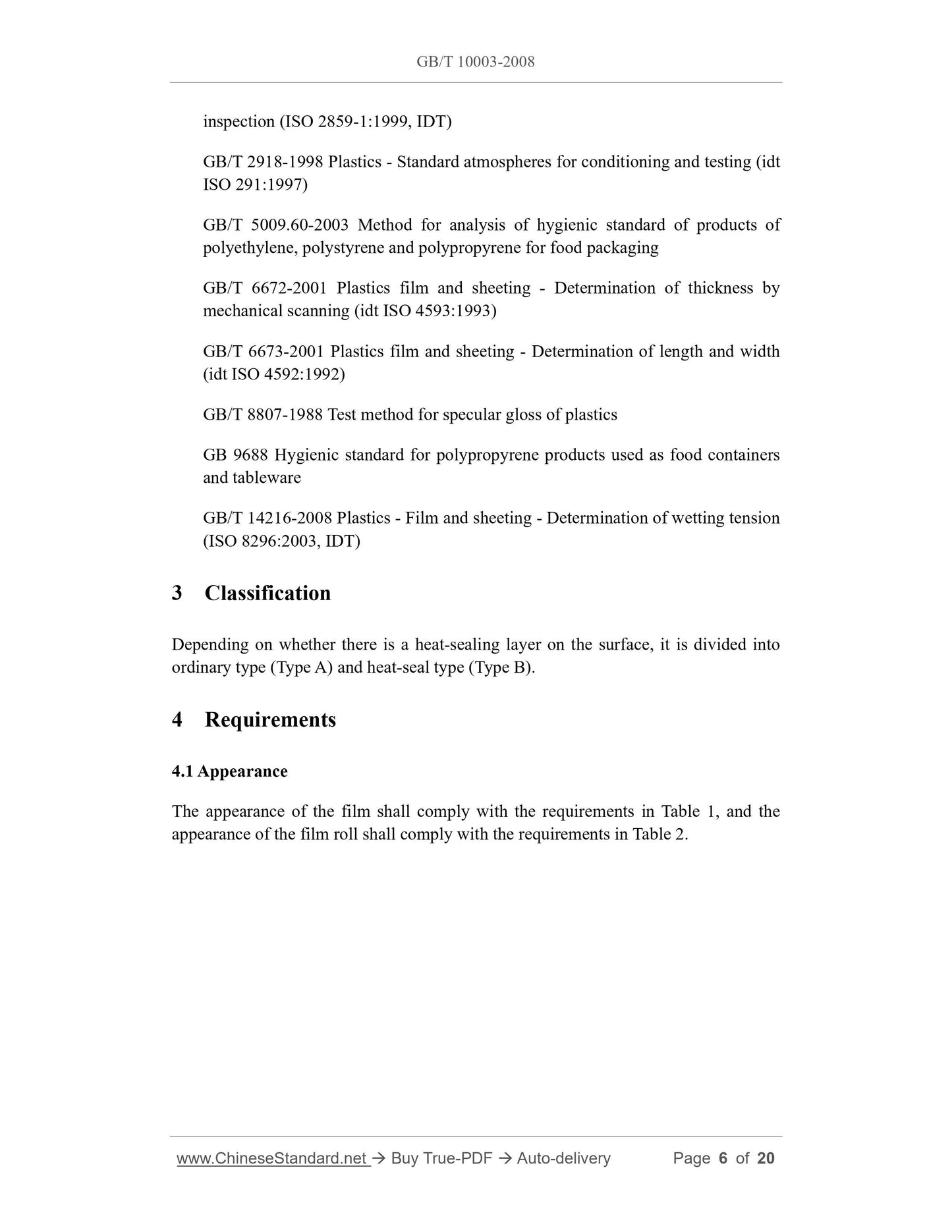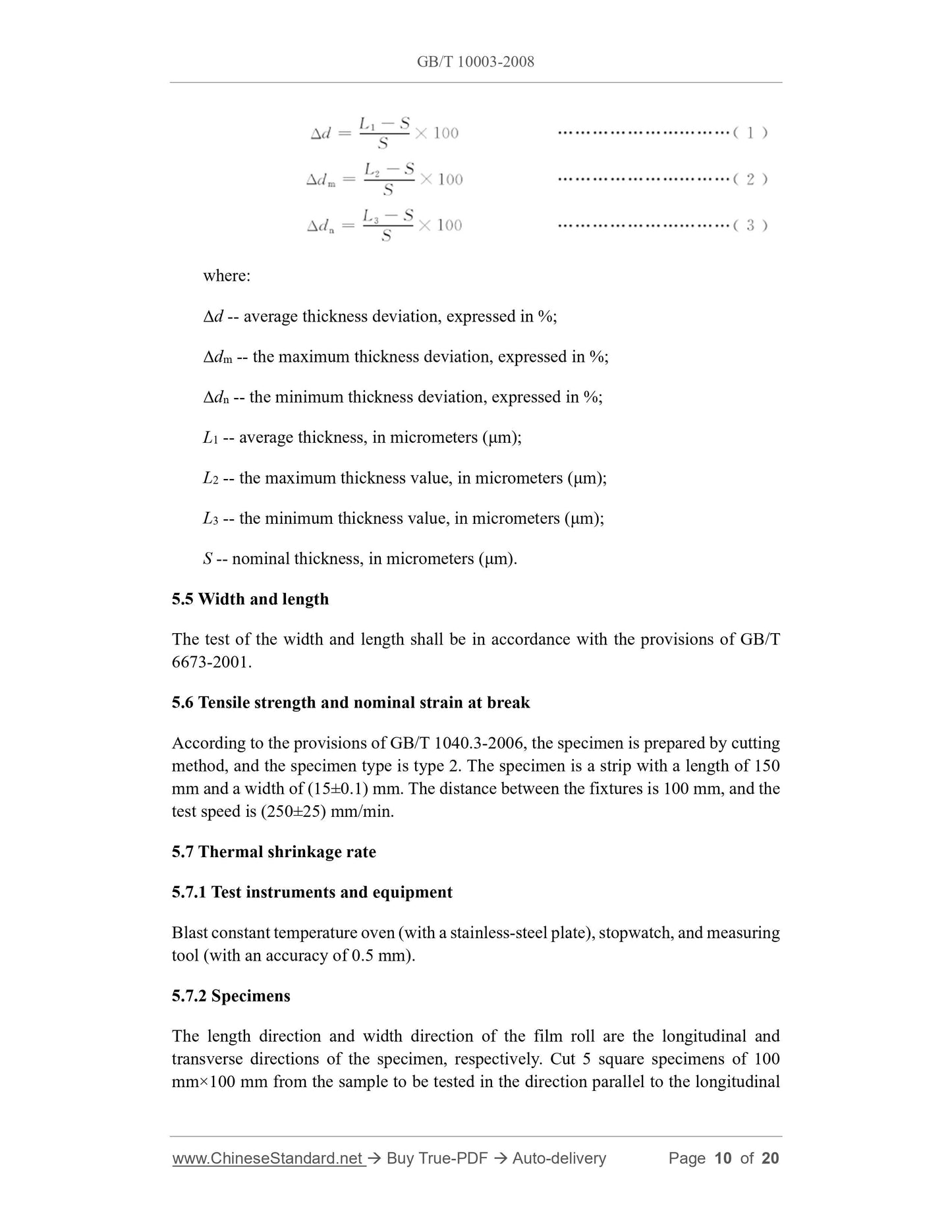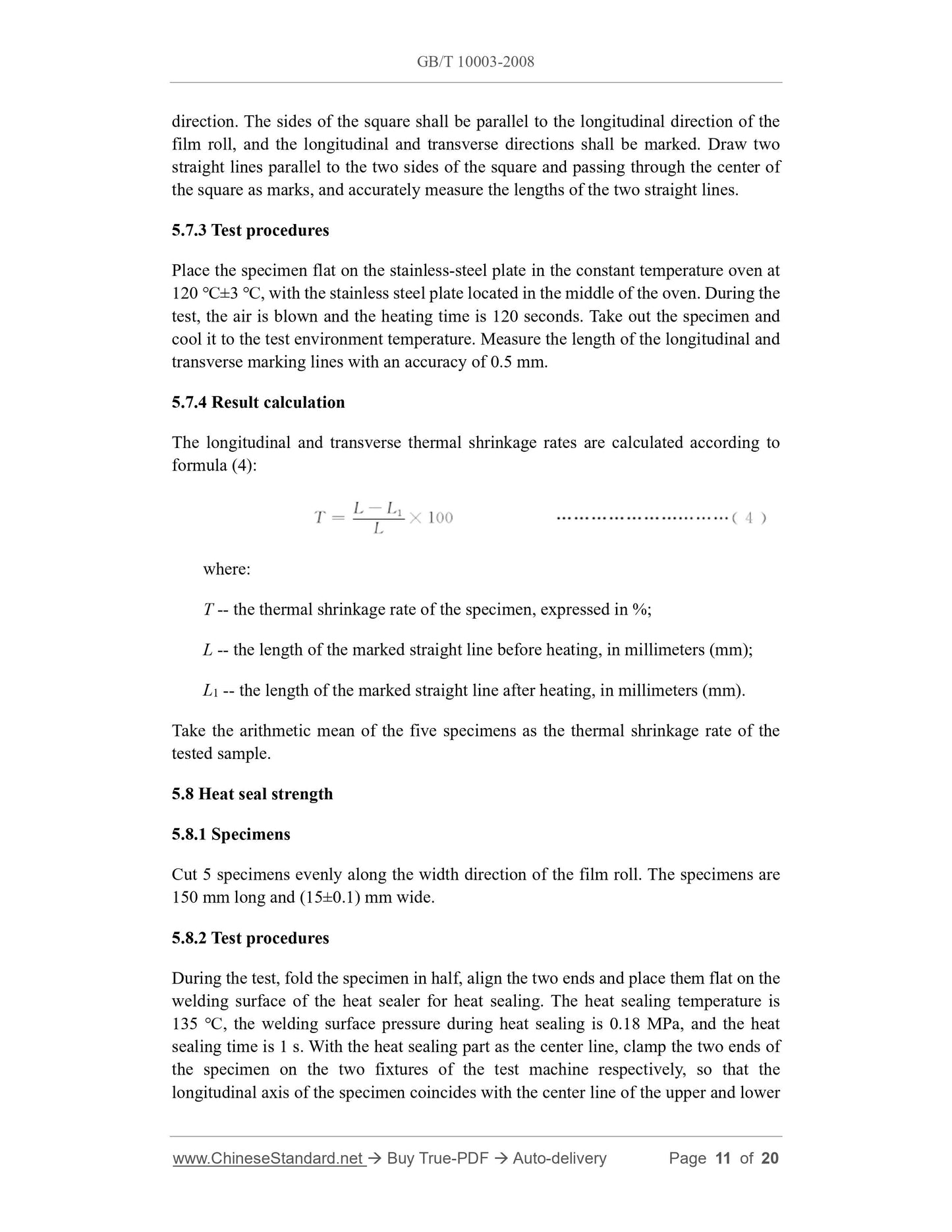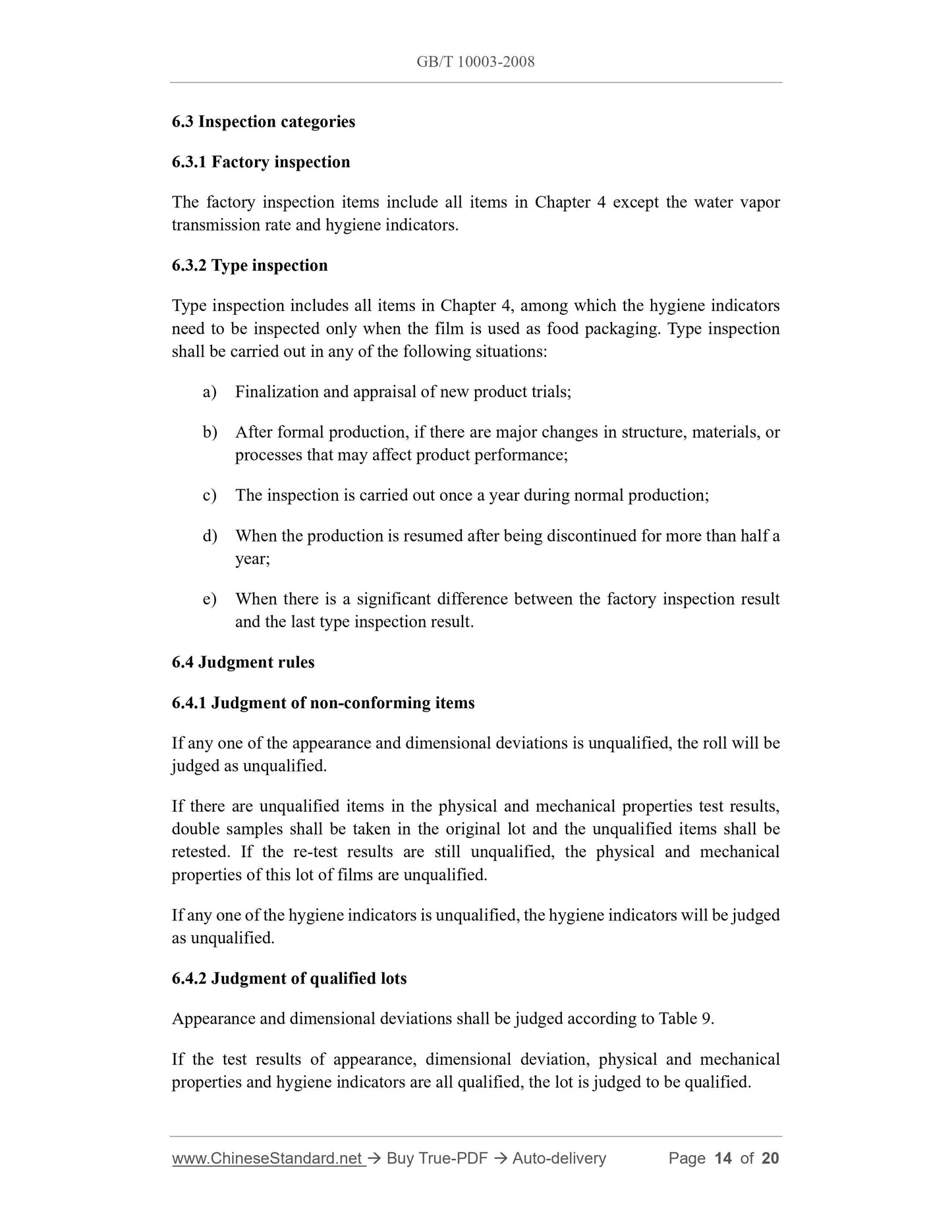1
/
of
9
www.ChineseStandard.us -- Field Test Asia Pte. Ltd.
GB/T 10003-2008 English PDF (GB/T10003-2008)
GB/T 10003-2008 English PDF (GB/T10003-2008)
Regular price
$295.00
Regular price
Sale price
$295.00
Unit price
/
per
Shipping calculated at checkout.
Couldn't load pickup availability
GB/T 10003-2008: Biaxially oriented polypropylene (BOPP) film for general use
Delivery: 9 seconds. Download (and Email) true-PDF + Invoice.Get Quotation: Click GB/T 10003-2008 (Self-service in 1-minute)
Newer / historical versions: GB/T 10003-2008
Preview True-PDF
Scope
This standard specifies the terms and definitions, classification, requirements, testmethods, inspection rules, marking, packaging, transportation and storage of biaxially
oriented polypropylene (BOPP) films for general use.
This standard applies to ordinary (plain film) and heat-seal films for general use, which
are made from polypropylene resin as the main raw material and are produced by biaxial
stretching using the flat film method.
This standard does not apply to other biaxially oriented polypropylene films with
special functions, such as biaxially oriented polypropylene matt film, biaxially oriented
polypropylene pearlized film, biaxially oriented polypropylene film for ripping strip,
biaxially oriented polypropylene film for capacitors, and biaxially oriented
polypropylene cigarette packaging film.
Basic Data
| Standard ID | GB/T 10003-2008 (GB/T10003-2008) |
| Description (Translated English) | Biaxially oriented polypropylene (BOPP) film for general use |
| Sector / Industry | National Standard (Recommended) |
| Classification of Chinese Standard | G33 |
| Classification of International Standard | 83.140.10 |
| Word Count Estimation | 14,148 |
| Date of Issue | 2008-12-30 |
| Date of Implementation | 2009-09-01 |
| Older Standard (superseded by this standard) | GB/T 10003-1996; GB/T 12026-2000 |
| Quoted Standard | GB/T 191; GB/T 1037-1988; GB/T 1040.3-2006; GB/T 2410-2008; GB/T 2828.1-2003; GB/T 2918-1998; GB/T 5009.60-2003; GB/T 6672-2001; GB/T 6673-2001; GB/T 8807-1988; GB 9688; GB/T 14216-2008 |
| Adopted Standard | ISO 17555-2003, MOD |
| Regulation (derived from) | National Standard Approval Announcement 2008 No.24 (Total No.137) |
| Issuing agency(ies) | General Administration of Quality Supervision, Inspection and Quarantine of the People's Republic of China, Standardization Administration of the People's Republic of China |
| Summary | This standard specifies the general purpose biaxially oriented polypropylene (BOPP) film terminology and definitions, classification, requirements, test methods, inspection rules, signs, packaging, transport and storage. This standard applies to the polypropylene resin as the main raw material, with a flat membrane via two-way stretch ordinary type (film) and heat-seal films prepared for general purposes. Biaxially oriented polypropylene film of this standard does not apply to other special features, such as biaxially oriented polypropylene film extinction, pearl BOPP film, biaxially oriented polypropylene film for cable, biaxially oriented polypropylene film capacitors, BOPP cigarette packaging films. |
Share
